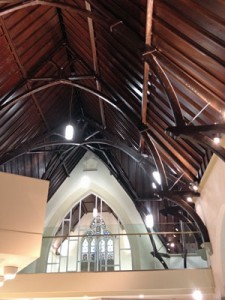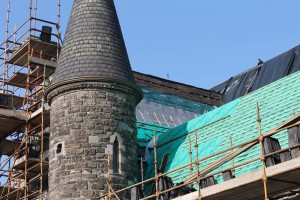 Sustainable Traditional Buildings Alliance conference
Sustainable Traditional Buildings Alliance conference
This week Enviroform was one of a number of specialist insulation experts that attended the Sustainable Traditional Buildings Alliance conference on Responsible Retrofit for Sustainable buildings. We attended along with a large number of heritage groups, research organizations and building specialists.
Liam Brown explained: “The whole focus was on how to responsibly retrofit heritage properties and the need for more research on the effects these measures may have.
“The most comment tread by the majority of the speakers was the emphasis on design and detailing to eliminate thermal bridging at critical junctions. Coming up with a common principle and approach which can be adapted to suit different property design, fabric and location.”
He added: “Across the UK there are a lot of homes and buildings that were designed and built using materials that pose a challenge fifty, seventy, a hundred or more years later. In the UK for example over a fifth of homes were built at the start of the last century. A lot of these are now rental properties and over the years, successive owners have adopted a sticking plaster approach to the insulation and heating problems that have arisen. Damp. mould, structural issues. These become critical over time.
Why is this a problem? Liam explained: “These buildings form the fabric of homes across the UK and there needs to be a sustainable agreed approach on the best way to preserve them for future generations to live in. A one size fits all approach is a recipe for problems. People who have bought these properties need to know how to maintain them. People renting them need to be able to live in a healthy home which is difficult if it has damp and mould.”
Liam continued: “If you are the owner of an older building and you are concerned about these issues, the reality is that now more than ever there are a range of affordable modern materials and approaches that can sort the problem. The key is in knowing which materials to use to increase the energy efficiency of each building. Each building has its own challenges and it is up to people like ourselves to come up with solutions that are Building specific.
“This conference tackled these issues, and it is reassuring to know that there are a lot of like minded people in the industry. The key is a partnership approach with Local Authorities, Housing Associations and private landlords playing their part alongside some of the organisations within the built environment and heritage sectors that understand these problems on a day-to-day basis.”
Liam concluded: “The conference was aimed at those of us involved in retrofit programmes and we were able to look at the problems and solutions through workshops, hands-on training sessions, and case studies.”

